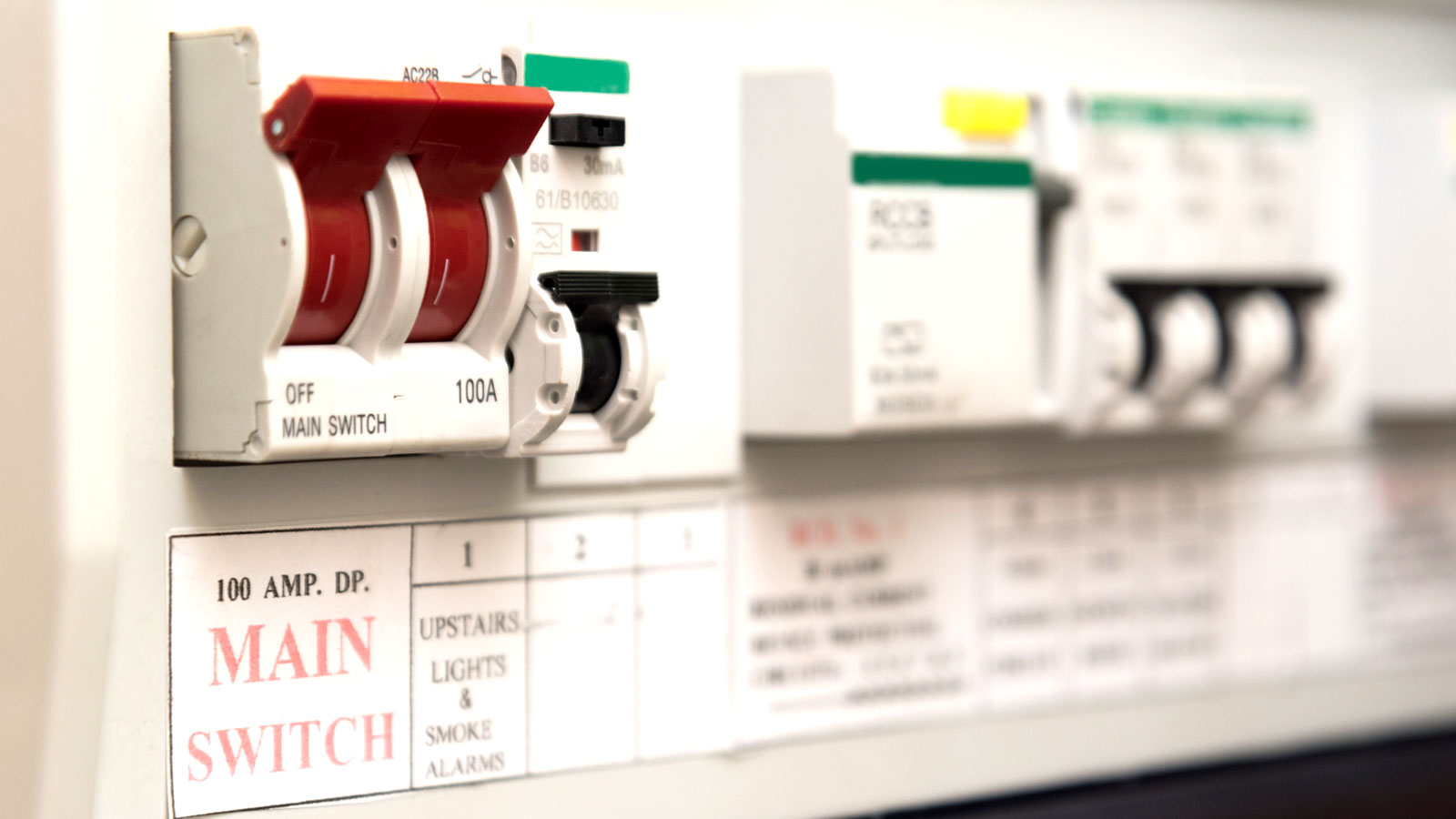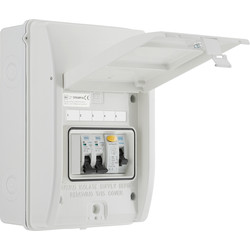Does your fuse box keep tripping? Find out why and how you can fix it
Discover what could be causing your fuse box to trip and whether it's time to call in an electrician

If the fuse box in your home keeps tripping, it's a warning that the electrical system has a problem that shouldn’t be ignored. It could be something as straightforward as a faulty appliance, or it could be something more serious that a qualified electrician needs to come and investigate.
While the tripping can be annoying, it does mean that you are protected. Every time there is a power surge, the fuse box switches off the electrics to avoid potential hazards. Here the experts reveal how to identify a problem, what you can do to fix it and when it's time to call in a professional.

Paul Collins is NICEIC’s Technical Director and is respected both within NICEIC and across the wider electrotechnical industry as a champion of technical integrity, competence and safety.
Reasons why a fuse box keeps tripping
A fuse box is also known as a fuse board or consumer unit, and if you are having problems with it, such as tripping regularly, then there can be a few underlying reasons why as Paul Collins, Technical Director at NICEIC explains, “Common causes include when the circuit is overloaded, an appliance or light fitting is faulty, there is damage to existing wiring somewhere in the house, or there is water ingress affecting the electrical equipment.”
Viktor Velikov, Director of Elserve adds, “In my experience repairing appliances, a fuse box that trips is almost always responding to a fault somewhere in the electrical system.” He adds, “Common causes are an overloaded circuit, where too many devices are running at once and drawing more power than the circuit can handle, which may be shorting internally.”
Try these consumer units to update your fuse box

Viktor Velikov is the Director of Elserve, with over 22 years in the domestic appliance industry. His work regularly involves diagnosing electrical faults and advising on safe, effective solutions for homeowners.
Causes of a consumer unit tripping
Identifying the issue for a tripping fuse box is the hard part, as there could be a myriad of reasons, but Collins offers some smart advice to help discover the problem: “Look at your consumer unit to find the circuit breaker switch that has tripped. These should be labelled, and this will help you identify which area of the house or which circuit is causing the problem. For example, it may indicate ‘ground floor socket-outlets’.”
Overloaded circuits are a common problem, and following some simple steps will help identify the problem. Collins says, “You want to unplug all small and large appliances on the ground floor, including table or floor-standing lamps, and return to your consumer unit to reset the tripped switch.”
He adds, “If the circuit breaker switch does not re-trip immediately, try plugging things back into the electrical socket and turning them back on, one at a time.” This is a process of elimination, and when you do find the culprit, Collins says, “Try replacing the item of equipment.” Do not plug in the faulty unit.
However, if the fuse box will not reset and re-trips immediately, Collins recommends that you contact a qualified electrician to investigate further. A final note of caution comes from Velikov, “It’s important not to keep resetting a tripping fuse without investigating, as it’s a sign the system is working well and protecting you from a fault.”
Bring your dream home to life with expert advice, how to guides and design inspiration. Sign up for our newsletter and get two free tickets to a Homebuilding & Renovating Show near you.
Fixing a tripping consumer unit
If you have been able to identify the cause of a consumer unit tripping by plugging and unplugging appliances and lights, then the problem is relatively easy to fix.
However, if this process doesn’t solve the problem, there may be more serious problems to sort as Collins points out. “The cause could be due to a faulty light fixture or a more complex electrical wiring fault.” If this is the case, you should avoid tackling the issue yourself.
Collins points out that “Electrical DIY is not safe and could lead to invalidated insurance claims.” He adds, “The safest and quickest way to ensure your home’s electrical installation is operating safely and as it should be, is to call on a registered electrician to assess the issue and advise on what is wrong and how it can be fixed.
Velikov reinforces the point, “In the UK, working on fixed wiring without the right qualifications can be illegal as well as dangerous.”
FAQs
How often should a fuse box be replaced?
A fuse box, also known as a consumer unit, doesn’t have a definitive lifespan as Collins shares, “A consumer unit that is well-maintained should last many years.” He adds, "Homeowners should ensure it is inspected at least once every ten years, while landlords must have it inspected every five years by a registered electrician.”
One reason that it might need to be changed sooner is a change to electrical regulations or standards. If this is the case, check with a qualified electrician to see what needs upgrading.
Another reason could be age. Velikov says, “If yours has rewirable fuses rather than breakers or lacks RCD protection, it’s worth discussing an upgrade at some stage.” He adds, “In the UK, replacing a fuse box typically costs between £400 and £600, depending on the size of your property.”
What does RCD mean on a fuse box?
The initials RCD are often seen on a consumer unit. Velikov explains what they mean and what it does: “RCD stands for Residual Current Device.” He adds, “It’s a safety switch that cuts the power if it detects electricity flowing somewhere it shouldn’t, such as through a person or into water.”
Collins explains further, “These are designed to automatically cut off power if an earth fault is detected in indoor and outdoor electrical circuits, helping to prevent electric shocks, fires, and potentially expensive damage.”
He adds that it should be tested regularly, “It is recommended that RCDs are tested regularly by pressing the test button (found above the switch itself, often in a different colour) every six months.”
Collins continues, “When you press the button, the device should trip and the power should switch off. However, if it doesn’t, it may indicate a problem, and you should contact a registered electrician to have it checked.”
A consumer unit/fuse box has control of all the electrics in your home, including the electrical sockets. Find out what uses the most electricity in the home, in case you need to use a different socket. And for your safety when doing any DIY, read our how to avoid drilling into wires guide.
Steve Jenkins is a freelance content creator with over two decades of experience working in digital and print and was previously the DIY content editor for Homebuilding & Renovating.
He is a keen DIYer with over 20 years of experience in transforming and renovating the many homes he has lived in. He specialises in painting and decorating, but has a wide range of skills gleaned from working in the building trade for around 10 years and spending time at night school learning how to plaster and plumb.
He has fitted kitchens, tiled bathrooms and kitchens, laid many floors, built partition walls, plastered walls, plumbed in bathrooms, worked on loft conversions and much more. And when he's not sure how to tackle a DIY project he has a wide network of friends – including plumbers, gas engineers, tilers, carpenters, painters and decorators, electricians and builders – in the trade to call upon.




